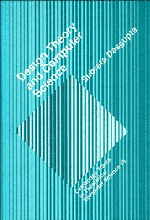Book contents
- Frontmatter
- Contents
- Preface
- Acknowledgements
- Part I The Architectonics of Design
- 1 The Inadequacy of Definitions
- 2 Design as the Initiation of Change
- 3 The Nature of Design Problems
- 4 The Form of Design Solutions
- 5 The Evolutionary Structure of Design Processes
- Part II Design Paradigms
- Part III Design and Science
- References
- Index
2 - Design as the Initiation of Change
Published online by Cambridge University Press: 10 February 2010
- Frontmatter
- Contents
- Preface
- Acknowledgements
- Part I The Architectonics of Design
- 1 The Inadequacy of Definitions
- 2 Design as the Initiation of Change
- 3 The Nature of Design Problems
- 4 The Form of Design Solutions
- 5 The Evolutionary Structure of Design Processes
- Part II Design Paradigms
- Part III Design and Science
- References
- Index
Summary
Most design theorists including Simon (1981) and Jones (1980) among the more influential agree that, in an ultimate sense, the goal of design is to initiate change in some aspect of the world. We perceive an imperfection in the state of affairs in some specific domain and we conceive or design an artifact which when implemented will, we believe, correct or improve this state of affairs.
There are a number of consequences of this seemingly obvious observation.
DEMARCATING ENGINEERING FROM SCIENCE
I shall use the term engineering here (and throughout the book) as a synonym for the more cumbersome ‘sciences of the artificial’. That is, the term encompasses the activities involved in the production of all useful artifacts – both material, such as buildings, computers and machine tools, and symbolic or abstract such as organizations and computer programs. Clearly, except in the simplest of situations, engineering entails design.
The notion of design as an agent of change appears to establish a firm criterion for demarcating engineering from the natural sciences (such as physics, chemistry, biology or geology). According to conventional wisdom, the latter disciplines are concerned with understanding the natural universe; the engineering disciplines are concerned with its purposeful, artificial alteration or extension.
The tendency to distinguish between the natural sciences (or simply, ‘science’) and engineering has, over the years, assumed almost mythical proportions.
- Type
- Chapter
- Information
- Design Theory and Computer Science , pp. 6 - 12Publisher: Cambridge University PressPrint publication year: 1991



